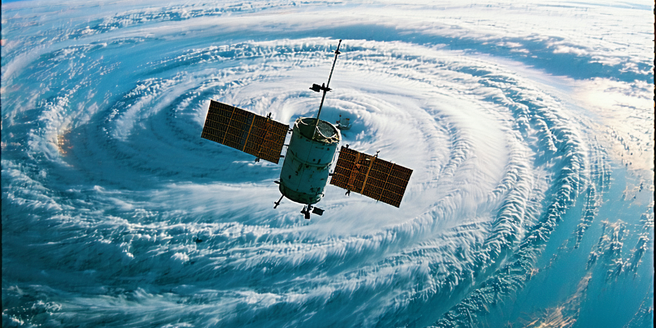
Understanding Meteorological Data Sources
Meteorological data forms the backbone of airport safety, assisting in real-time decision-making to avert potential hazards. Understanding these sources is crucial. Primary data originates from weather stations that utilize instruments such as thermometers, barometers, and anemometers to measure temperature, pressure, and wind speed respectively. Additionally, satellites provide critical data through remote sensing, capturing imagery and atmospheric conditions on a global scale. Other sources include radar systems that track precipitation and storm movements. Furthermore, commercial aircraft contribute to data collection during flights by recording in-flight weather conditions. Together, these diverse data points converge to form a comprehensive meteorological picture essential for accurate weather forecasting and timely safety measures.
The Role of Weather Forecasting in Aviation Safety
Weather forecasting is indispensable for aviation safety, influencing decisions from flight planning to emergency response. Accurate forecasts allow pilots and ground operations to anticipate and mitigate weather-related risks such as turbulence, thunderstorms, and low visibility conditions. Modern forecasting models, leveraging vast historical and real-time data, offer precise predictions by simulating atmospheric processes. This capability enhances situational awareness, enabling airlines to adjust routes and schedules proactively. Furthermore, advanced forecasting supports air traffic controllers in maintaining safe operations by ensuring timely communication of critical information to pilots. By minimizing weather-related disruptions and accidents, effective forecasting is a cornerstone of a safe and efficient aviation ecosystem.
Analyzing Historical Weather Patterns Near Airports
The analysis of historical weather patterns near airports is pivotal for risk assessment and infrastructure planning. By examining past meteorological data, airport authorities can identify trends and extremes that have influenced operations. For instance, recognizing recurring fog events can guide the implementation of advanced ILS (Instrument Landing Systems) to improve landing accuracy. Historical analysis also aids in understanding seasonal variations and prevailing wind patterns, which are critical for runway orientation and design. Furthermore, analyzing past data helps in estimating the impact of climate change, preparing airports to accommodate shifts in weather patterns over long periods. This data-driven approach ultimately enhances operational resilience and ensures safety.
Technological Tools for Monitoring Weather Conditions
Technological advancements play a vital role in monitoring weather conditions around airports. Automated Weather Observing Systems (AWOS) provide continuous data on temperature, humidity, wind, and visibility, supporting real-time decision-making. Doppler radar systems offer invaluable insights into storm movements and precipitation intensity, enhancing short-term forecasts. The integration of Internet of Things (IoT) devices has further advanced data collection with high-resolution sensors dispersed throughout airport premises. Moreover, machine learning algorithms are increasingly employed to analyze complex datasets and improve predictive accuracy. Together, these tools enable comprehensive monitoring and, more importantly, facilitate seamless communication between meteorologists, pilots, and air traffic control, ensuring proactive safety measures.
Case Studies: Impact of Weather on Airport Operations
Examining case studies on weather impact reveals critical insights into operational challenges faced by airports. Notably, the runway closures at major international airports due to snowstorms or hurricanes illustrate the vulnerability of infrastructure to severe weather events. Delays and diversions arising from these conditions highlight the necessity for resilient contingency planning. Furthermore, fog-induced visibility reductions can lead to significant disruptions, prompting investments in cutting-edge landing technologies. Analyzing these cases underscores the importance of accurate weather predictions and adaptive strategies to maintain service continuity and safety. By learning from past events, airports can refine their protocols and minimize future disruptions.
Future Trends in Weather Data Analysis for Aviation
The future of weather data analysis in aviation is poised to be transformed by emerging technologies and methodologies. Artificial intelligence and advanced analytics are set to play a pivotal role, enabling the synthesis of vast data sets for precise forecasting. Additionally, quantum computing offers the potential to revolutionize weather modeling by handling complex computations at unprecedented speeds. Collaborations with tech companies are expected to yield innovative solutions like augmented reality displays in cockpits, enhancing pilot awareness of weather threats. These advancements promise to elevate safety and efficiency, enabling the industry to better navigate the challenges posed by evolving weather patterns.
